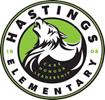Assessment and Reporting
BC's educational curriculum
Over the last few years, BC's educational curriculum underwent an important change. The updated curriculum will provide students with the necessary skills for their future. Children need to learn adaptive skills, especially to be prepared for the rapid change of technology in years to come.
Communicating Student Learning
Because of the redesigned curriculum, a new approach to assessment and reporting is needed. It is called Communicating Student Learning or CSL. The Vancouver School District is therefore changing its assessment and reporting practices. Changes in how parents receive information on their child’s learning will include strengths-based reporting (using a proficiency scale). This change will take place for all elementary grades by the 2020-2021 school year.
This approach gives information that advances learning rather than focusing on measuring learning. The approach helps students and parents answer three questions about the learning:
- Where is the student now?
- Where are they going?
- How do they get there?
This reporting practice gives a complete picture of how students are doing at school and how their learning is developing. By participating in this process, students are provided with meaningful information and feedback about their learning, so that they are more empowered to reach their learning goals. Parents are involved as partners in the best ways to support and improve their child’s learning.
Report card format
As a result, report cards will look different, and will include:
- Descriptive written comments addressing:
- student learning strengths
- areas for growth
- ways to support learning
- A student proficiency scale for each subject area (in relation to grade level expectations):
- BEGINNING to acquire knowledge, skills, strategies and processes
- DEVELOPING the ability to apply knowledge, skills, strategies and processes
- APPLYING knowledge, skills, strategies and processes consistently
- EXTENDING knowledge, skills, strategies and processes creatively and strategically.
The new reporting method is taking place after a successful two-year pilot project involving 70 elementary schools and after gathering extensive feedback from parents throughout the pilot.
Reporting schedule
There will also be a new reporting schedule. Parents will get a minimum of five communications throughout the school year:
Two formal written reports:
- A mid-year progress report will be sent home to families by the end of January
- It will indicate where the child is in relation to the age/grade expectations using written comments and a proficiency scale
- It will include a summary of the progress toward the goals in the child’s Individual Education Plan (IEP), where applicable
- A summative report will be sent home to families by the end of June
- It will indicate where the child is in relation to the age/grade expectations using written comments, a proficiency scale, and the student’s self-assessment of the Core Competencies (Communication, Thinking, and Personal and Social)
- It will include a summary of the progress toward the goals in the child’s Individual Education Plan (IEP), where applicable
A minimum of three ongoing communications with families (timing at the teacher’s decision):
- These ongoing communications will happen in different ways. They may be a three-way (student, parent, teacher) conference, an electronic portfolio review, a parent/teacher meeting, reflections on student work, an online platform, a telephone conversation, an interim written reports, or demonstrations of learning.
These changes will take place over the next two school years (2019-2020 – 2020-2021) in all elementary schools.
The focus of the update in assessment and reporting practices provides a regular and ongoing basis that allows both learners and parents to gauge where children are at in their learning, what they are working toward, and, the ways in which that learning can be supported.

